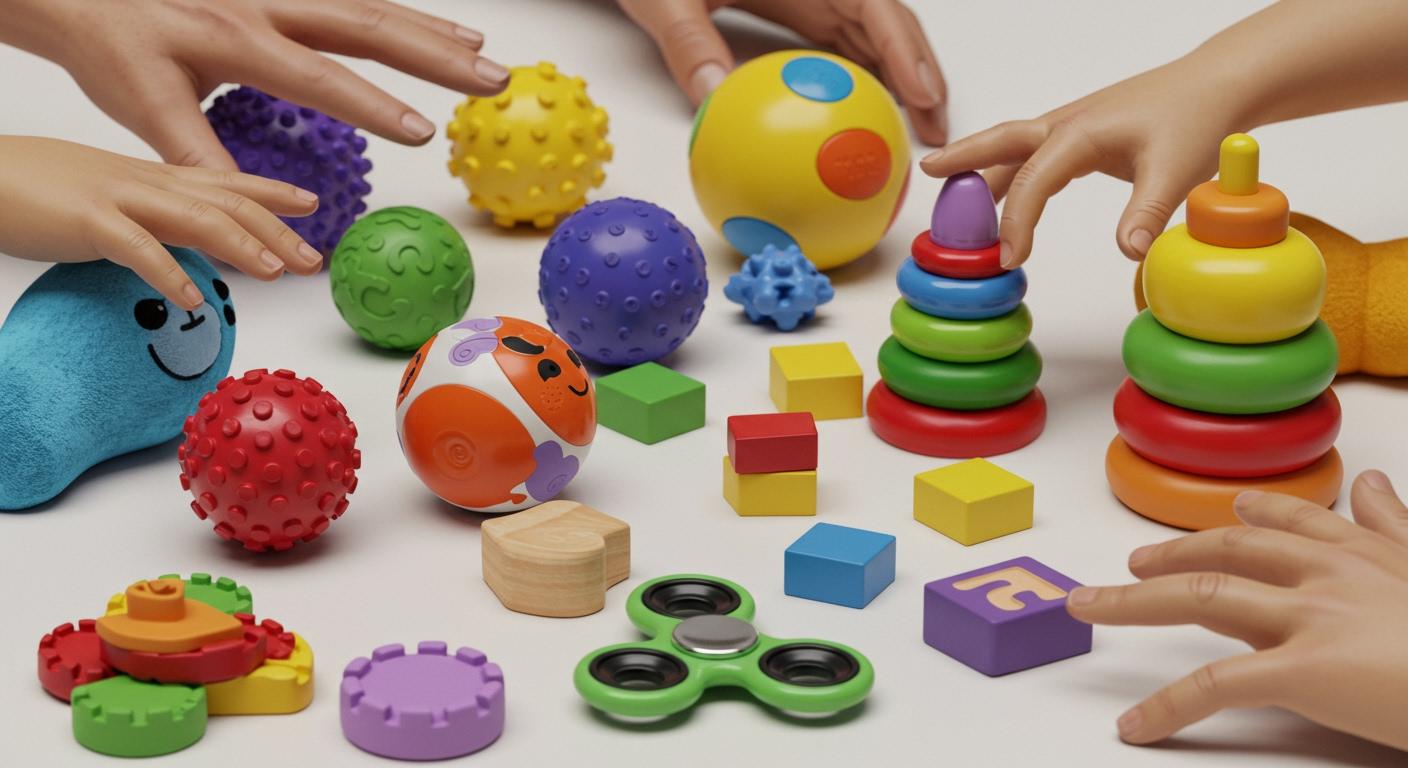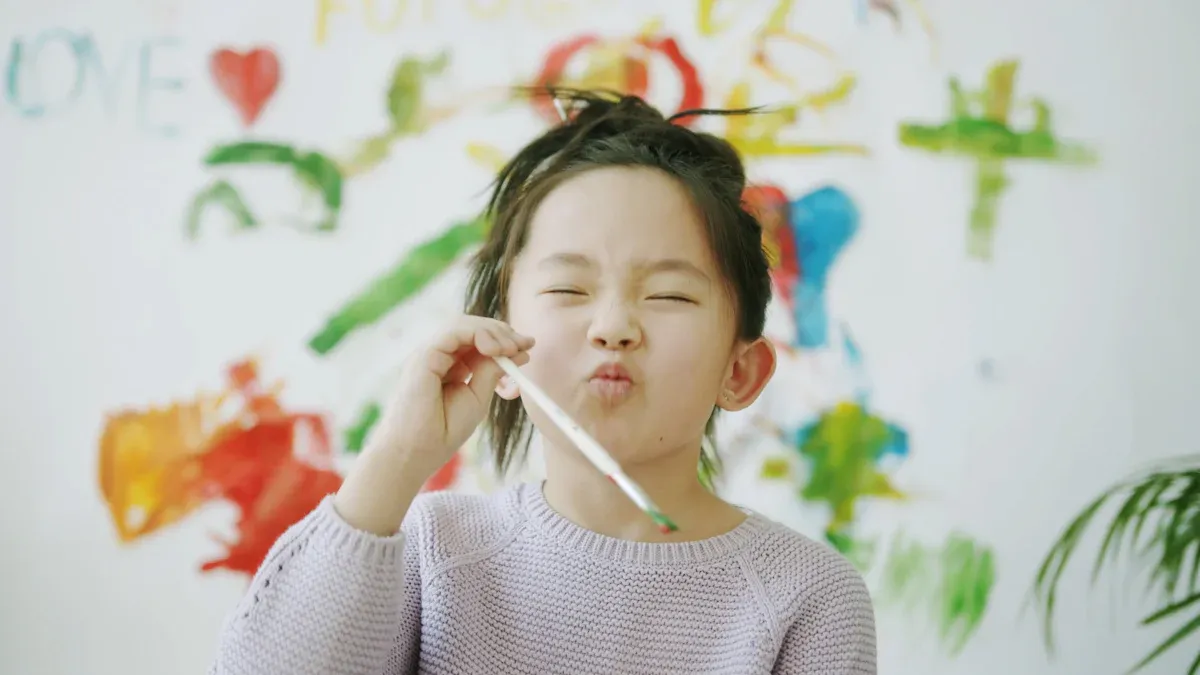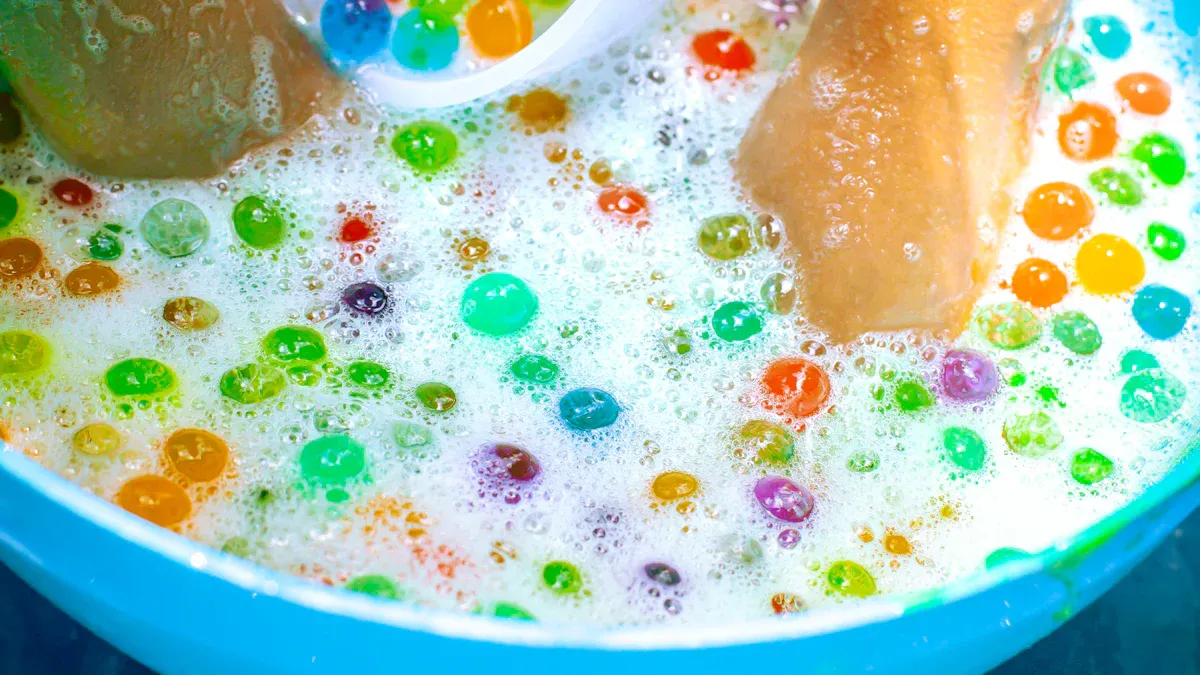Understanding Sensory Toys and Their Purpose

You might ask what are sensory toys and why they are important for your child. Sensory toys help your child use their senses, like touch and sound. These toys assist your child in growing in many ways. Children with autism or sensory processing differences benefit significantly from sensory play.
Developmental Area | Impact of Sensory Toys |
|---|---|
Helps the brain grow by using sensory play. It builds thinking, problem-solving, and memory skills. | |
Motor Skills | Enhances both small and large muscle skills. It improves hand-eye coordination and finger movement through play with these toys. |
Emotional Regulation | Aids children in managing their feelings. It allows them to better handle their sensory experiences. |
Key Takeaways
Sensory toys let kids use their senses. This helps them grow in thinking, moving, and feeling skills.
There are many sensory toys for different senses. Some toys help with touch, sound, or sight. These toys help kids learn and explore.
Sensory toys can help kids feel calm. They also help kids focus better. These toys are good for kids with autism or sensory processing differences.
Playing with sensory toys every day helps kids learn important skills. These skills help them do well in school and with friends.
Picking the best sensory toys can help your child. It helps them learn, share, and feel more sure of themselves.
What Are Sensory Toys

Definition
When you ask about sensory toys, you want to know what helps kids use their senses. Sensory toys are made to excite one or more senses. These can be touch, sight, sound, movement, taste, or smell. Experts say these toys help kids use their senses. They are very helpful for kids with autism. Sensory toys help kids feel calm. They give kids the sensory input they need.
Sensory toys are not the same as regular toys. Their main job is to give special sensory input. This helps with focus, attention, and motor skills. Sensory toys make you repeat actions. This helps you learn new skills. These toys help you stay calm, focus longer, and build strong motor skills. Regular toys are mostly for fun, pretend play, and playing with others.
Sensory toys let you explore your world safely. They help you use your senses and learn by doing.
Types
If you wonder about types of sensory toys, there are many. Each type helps different senses. Some are best for kids with autism or sensory needs. Here is a table that shows common sensory toys and what they do:
Type of Sensory Toy | Description | Examples |
|---|---|---|
Visual Stimulation Toys | These toys use lights or movement to excite your eyes. | Mobiles, light-up toys, spinning toys |
Auditory Stimulation Toys | These toys make sounds or music for your ears. | Musical instruments, sound puzzles |
Tactile Stimulation Toys | These toys have different textures and shapes to touch. | Textured balls, squishy toys |
Olfactory Stimulation Toys | These toys have smells for your nose. | Scented playdough, scented markers |
Gustatory Stimulation Toys | These toys are safe to taste or chew. | Teething toys, textured teethers |
Proprioceptive and Vestibular Toys | These toys help you move and balance your body. | Swings, balance boards, trampolines |
Some sensory toys use more than one sense. For example, a toy with lights and music excites both sight and hearing. Toys like textured balls, play dough, and bins with different things let you touch and feel. These toys help you use your fingers and hands. You can feel and compare textures, shapes, and objects.
Here are some tactile sensory toys kids like:
Tactile Sensory Toys |
|---|
Textured balls or stress balls |
Play dough or sensory putty |
Fabric swatches or texture boards |
Water beads or dry rice bins |
Soft brushes or sensory brushes |
Sensory toys also help important sensory systems. The table below shows how toys help each system:
Sensory System | Stimulation Method | Examples of Toys |
|---|---|---|
Visual | Toys with bright colors or cool visual effects. | Colorful blocks, light-up toys |
Auditory | Toys that make sounds for your ears. | Drums, sound boxes |
Tactile | Toys with different textures to touch. | Sensory balls, squishy toys |
Proprioceptive | Toys that help you move and balance. | Balance boards, weighted toys |
You might ask which sensory toys are best for kids with sensory problems. Many therapists suggest fidgets, putties, chewies, weighted toys, and sensory brushes. These toys help kids who are very sensitive or who want more sensory play.
Sensory toys help you focus and pay attention by giving you the input you need.
They help kids play together and share sensory fun.
Sensory toys excite many senses like taste, smell, touch, sound, sight, movement, and balance.
They help you use your body and mind and give you a safe place to explore.
When you pick sensory toys, you help your child grow. You help them learn skills, handle feelings, and enjoy learning through play.
Sensory Toys Benefits

Calming and Relaxation
Sensory toys can help you feel calm. They are useful when you feel anxious or overwhelmed. These toys give your body the input it needs. This helps you relax and focus better. Weighted toys and pressure toys give deep pressure. This kind of input makes you feel safe. It helps you feel secure. Sensory chew toys help with anxiety. They also help you concentrate.
Type of Sensory Toy | Benefit |
|---|---|
Give deep pressure that calms you and helps you relax. | |
Sensory Chew Toys | Lower anxiety and help you focus better. |
Goal Attainment Scaling (GAS) | Shows how much you improve with sensory play. |
Sensory-friendly things like weighted blankets help you relax. Soft seats also help you manage excitement. These tools make you feel safe, especially when you are stressed. Studies show sensory toys help you feel less sad. They make you more comfortable in places like hospitals. Playing with sensory toys helps you talk to others. It makes your time better.
Evidence | Description |
|---|---|
Helps you focus and relax. It makes it easier to handle excitement or worry in medical places. | |
Specialized sensory tools | Weighted blankets calm you down. They lower hyperactivity and help you feel safe when stressed. |
Benefits during hospitalization | Toys help you feel less sad. They help you recover and feel calmer. You can accept medical care more easily. |
Play as a therapeutic resource | Play helps you talk to nurses. It makes care better for you. |
Fidget toys can lower your anxiety. They distract you from worries. They help you focus on what is happening now. Touching sensory toys helps you stay calm. It helps you stop thinking about worries. Fidget toys help you let go of tension. They help you manage stress.
Tip: If you feel anxious, try a sensory toy. Use a stress ball or a weighted blanket. These can help you feel calm and ready to learn.
Research shows sensory training helps you pay attention. It also helps you move better. Using sensory toys helps you focus and learn more.
Learning and Development
Sensory toys help you learn and grow. When you use these toys, you touch, see, and hear new things. This kind of play helps your brain grow. It helps your brain make new connections. Experts say your brain makes many new connections every second. Sensory toys help this growth by giving you lots of experiences.
Source | Findings |
|---|---|
Harvard Centre on the Developing Child; Zero to Three; PBS North Carolina | Your brain makes many new connections every second. Sensory play helps your brain grow. |
Developmental Psychology (2024) | Learning with many senses helps you remember more. You stay interested and learn better. |
Frontiers in Education | Toys that use many senses help you learn more than regular toys. |
Michigan State University Extension | Sensory play helps you get ready for reading, writing, and solving problems in school. |
Using many senses helps you remember things. Sensory toys help you explore and try new things. You learn cause and effect by squeezing or shaking toys. This helps you solve problems. It helps you make choices.
Sensory toys help you explore. You learn cause and effect by touching and moving toys.
Puzzles and mazes help you make choices. You use your brain to solve problems.
Sensory play teaches you patience. You keep trying until you succeed.
Sensory toys help you get ready for school. You build skills for reading, writing, and math. Teachers use sensory toys in class to help everyone learn. Sensory-friendly classrooms help you join in and feel included.
Evaluation Method | Measurable Outcomes |
|---|---|
Standardized Assessments | Sensory toys help you talk and play with others. They help you handle sensory input better. |
Longitudinal Studies | Using sensory rooms helps you talk, move, and behave better over time. |
Internal Program Evaluation | Teachers check how you act before and after using sensory toys. They see if you behave and learn better. |
Teachers check how sensory toys help you join school activities.
Sensory toys help you behave better in class.
You can do more classroom tasks.
Note: Sensory toys help you learn by doing. You build skills for school and life.
Emotional Regulation
Sensory toys help you control your feelings. Many kids with autism have trouble with strong emotions. Sensory toys give you ways to handle tough feelings.
Aspect | Description |
|---|---|
Sensory Sensitivities | Many kids with autism have trouble with sensory input. This makes it hard to control emotions. |
Tailored Sensory Diets | Special sensory diets use calming tricks and toys. These help you handle tough times. |
Emotional Self-Regulation | Sensory toys help you control your feelings. You have fewer outbursts and better days. |
Sensory-Friendly Environments | Safe spaces help you feel calm. They stop emotional outbursts and help you join in. |
Coping Strategies | Deep breathing and sensory tools help you stay calm. They help you feel better every day. |
You can use sensory toys to calm down. These toys help you control your reactions. They help you show your feelings in good ways. Sensory-friendly spaces help you join in and avoid outbursts.
Sensory toys help you handle stress and frustration.
You learn to notice your feelings and use toys to stay calm.
Sensory toys help you grow emotionally and feel confident.
If you have strong feelings, sensory toys can help you find balance. They help you feel more in control.
Sensory Toys and Autism
Practical Use
You can use sensory toys to help your child grow. Many therapists say to set clear goals for play. You may want your child to talk more or move better. You might want to help them handle sensory input. A routine with sensory play helps your child feel safe. It lets them know what will happen next. Pick toys that your child likes. Fun toys make learning easier.
Occupational therapists use sensory toys in therapy. They choose toys that fit your child’s needs. Playing in a ball pit or with textured balls helps your child move. These activities help your child use their senses. You can add sensory play to meals or bedtime. This helps your child learn every day. Games with sensory toys teach turn-taking and sharing. Visual tools like schedules and timers help organize play. They also lower stress.
Tip: Keep the play area neat and quiet. This helps your child pay attention and enjoy play.
It is important to track progress. Write down which toys help your child most. Change your plan as your child grows. Some kids get upset by strong sensory input. Others need more sensory play. Always think about what your child likes and needs.
Positive Outcomes
Sensory toys help children with autism in many ways. You may see better social skills and more empathy. Your child may feel calmer and more sure of themselves. Sensory play helps kids work together and talk more. Playtime becomes more fun and active.
Studies show sensory toys help kids talk and learn faster. Playing with toys helps the brain grow new connections. Sensory toys also help kids feel calm. You may notice better hand-eye coordination and finger skills.
Benefits | Suitable For | |
|---|---|---|
Fidget Spinners | Focus, fine motor skills | Children with ADHD |
Sensory Balls | Tactile stimulation | Children with sensory processing issues |
Noise-Canceling Headphones | Reduces auditory overload | Children with autism |
Teachers use sensory toys in class and therapy. Kids who use sensory rooms often talk and move better. They also behave better. Teachers watch how kids play and learn. Picking the right toys shows what your child is good at. It also helps build trust.
Sensory toys help kids with autism learn and make friends. You can help your child by using sensory play every day.
Sensory toys are important for your child’s growth and happiness. When you pick these toys, your child learns new skills. Your child also feels more confident. Sensory play helps with moving, feelings, and making friends.
Description | |
|---|---|
Motor Skills | Helps your child move hands and eyes together. |
Emotional Regulation | Helps your child notice feelings and stay strong. |
Cognitive Development | Helps your child remember things and use words. |
Social Interaction | Helps your child talk and work with others. |
Sensory toys help your child relax and pay attention.
These toys help your child handle worry and join in daily life.
Playing with sensory toys helps your child learn, share, and do well each day.
Tip: Try many sensory toys to see which ones help your child the most.
FAQ
What age is best for sensory toys?
You can introduce sensory toys to babies as young as six months. Older children also benefit from sensory play. Choose toys that match your child’s age and interests.
How do I know which sensory toy my child needs?
You can watch how your child reacts to different textures, sounds, and movements. Try several toys. Notice which ones help your child feel calm or focused.
Are sensory toys safe for all children?
Most sensory toys are safe when you follow age guidelines. Always check for small parts if your child is under three years old. Supervise play to keep your child safe.
Can sensory toys help with learning at school?
Sensory toys can improve focus and help your child manage stress. Teachers often use fidget tools and sensory bins in classrooms. These tools support learning and social skills.
Where can I buy sensory toys?
You can find sensory toys at toy stores, online shops, and therapy supply stores. Many stores offer a wide selection. Ask your child’s therapist for recommendations.
Tip: Always read reviews and safety labels before buying new sensory toys.
See Also
Understanding Sensory Toys: Their Function and Benefits
Identifying When Adults May Benefit From Sensory Toys
Comparing Tactile Sensory Toys for Daily Use
